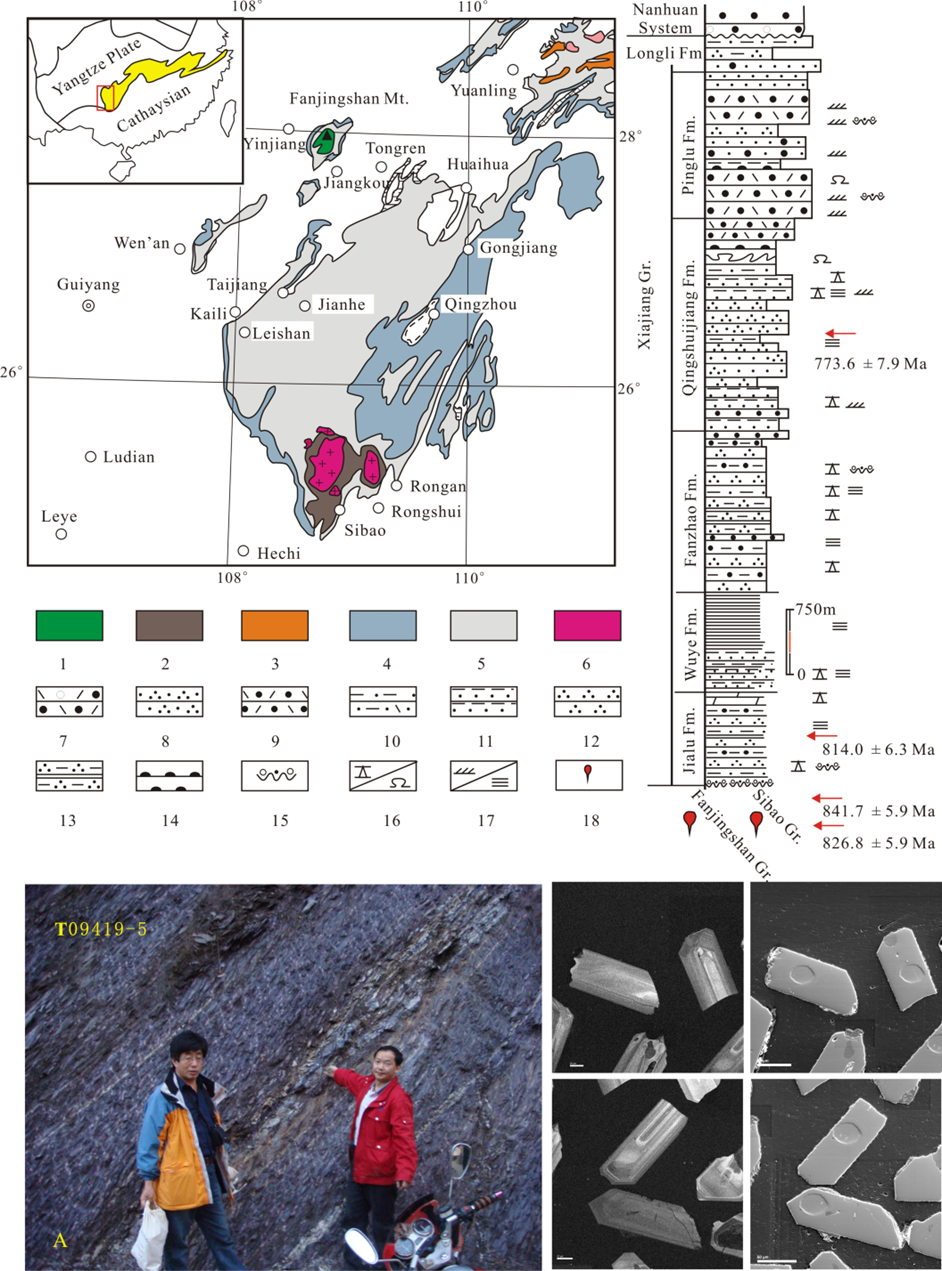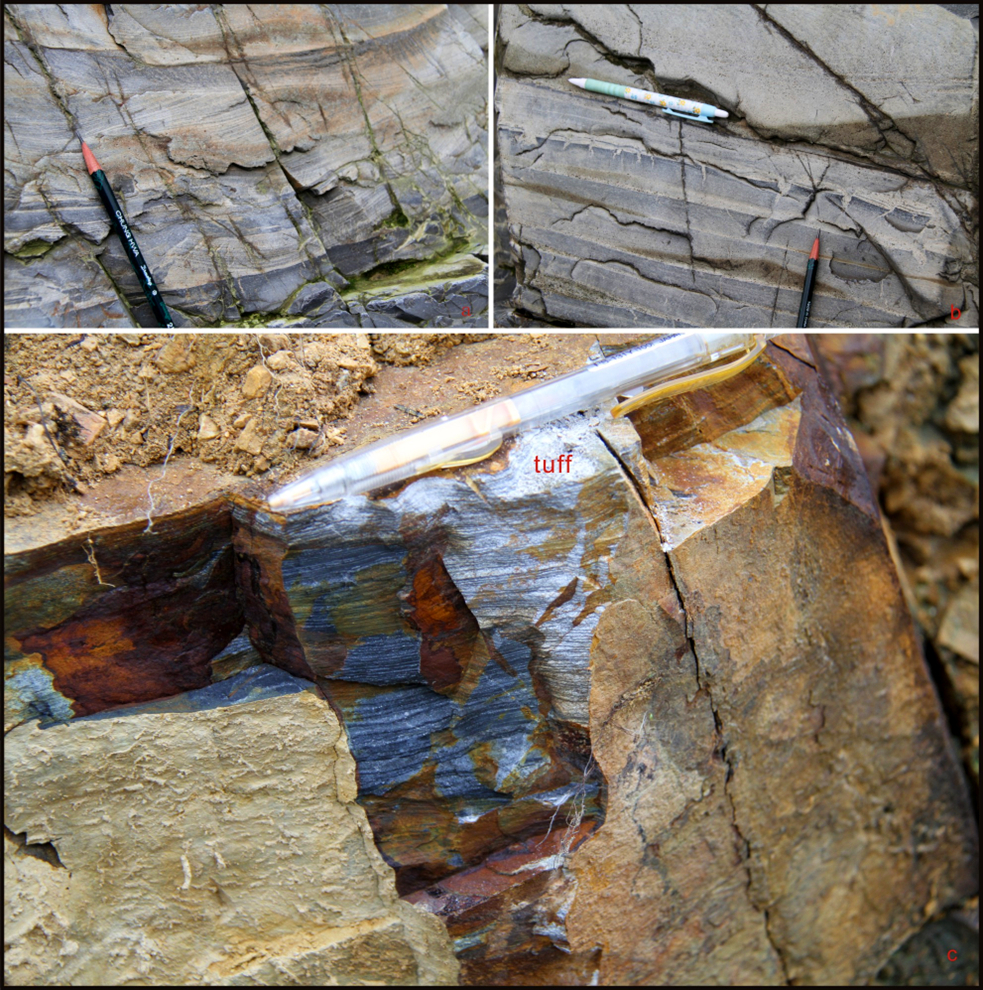Qingshuijiang Fm
Type Locality and Naming
Central easternmost Guizhou. The Qingshuijiang Formation was named by the Guizhou Party of Regional Geological Survey in 1962 and formally published in 1965 (on the Guidebook of 1 a 200 000 Scale Geological Map of Zhenyuan Sheet). The typical section is situated in Pinglue village in Jinping County, Guizhou Province. Middle formation in the Banxi Gr and in the Xianjiang Gr.
Synonym: (清水江组)
Lithology and Thickness
The Qingshuijiang Fm is dominantly composed of light gray, greenish gray and dark gray blasto-tuff, blasto-tuffite, blasto-sandstone, siltstone and slate, which is characterized by richly bearing tuffaceous material, variform flute casts and generally with Bouma sequences. From northwest to southeast, the sandy and tuffaceous matter decreases but the clay material increases. In the southeast of Fanjing Mt., the Qingshuijiang Fm is light gray, greenish gray and gray blasto-sandstone interbedded with blasto-tuff, blasto-tuffite and silty slate. Because the Qingshuijiang Fm in northeast Guizhou is onlapped by the overlying strata and incompletely exposed, it is only 0 to 500 m thick (only corresponding to the lower part of the Qingshuijiang Fm in Leigongshan district). The Qingshuijiang Fm is widely distributed in eastern Guizhou Province with a variable thickness, of which, that northwest of Fanjing Mountain area is 0 to 300 m, going southeastward, it increases to 850-2100 m, and the Tianzhu and Danzhai area has more than 2000 m.
[Figure: The Stratigraphic column of the Xiajiang Gr. in Guizhou Province. A-Volcanic ash beds in the Jialu Fm and zircons from the ash bed.]
[Figure: Siltstone with tuff beds in the Qingshuijiang Fm, Guizhou Province]
Relationships and Distribution
Lower contact
Overlies the Fanzhao Fm of the Xiajiang Gr or the Hongzixi Fm of the Banxi Gr.
Upper contact
Overlain conformably by the Pinglue Fm
Regional extent
Central easternmost Guizhou and border with Guizhou. The Qingshuijiang Fm is widely distributed in eastern Guizhou Province. In northeast Guizhou (Songtao, Tongren, Jiangkou), the lower part of the former Banxi Gr is now called the Hongzixi Fm and the upper part also called as the Qingshuijiang Fm, which corresponds to the Wuqiangxi Fm in Hunan Province.
GeoJSON
Fossils
Microplants (acritarchs) are not found from this formation.
Age
Depositional setting
The variform flute casts and generally with Bouma sequences, obviously represents the deposit of the terrigenous clastic turbidity intercalated with pyroclastic gravity flow (actually include pyroclastic turbidite and debris flow deposit).
Additional Information

